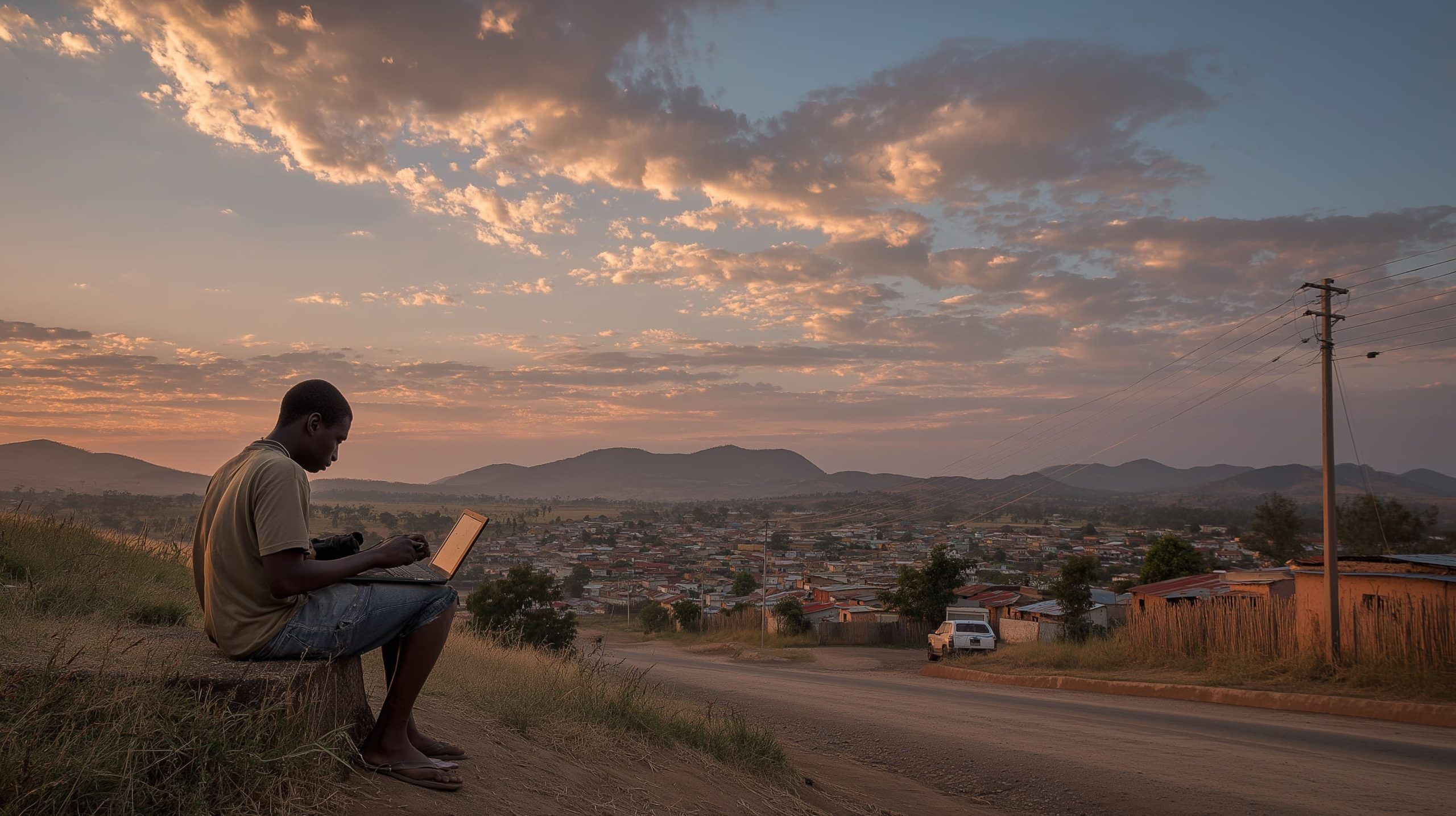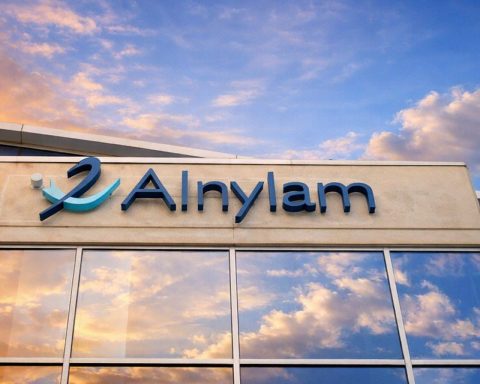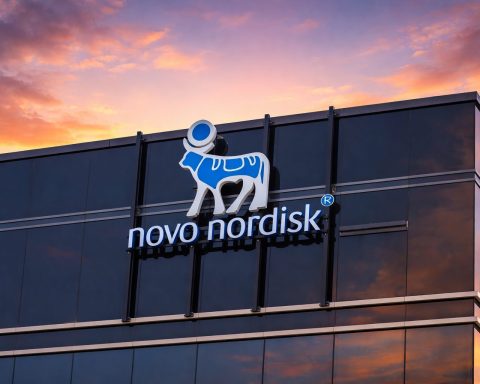- Eswatini’s population is about 1.25 million in 2025, while mobile subscribers total about 1.6 million, roughly 134% of the population.
- MTN Eswatini holds about 21% of the mobile market and Eswatini Mobile about 64%, with the remainder served by fixed lines and smaller ISPs.
- About 99% of people are within 2G range and 95% within 4G range, but 4G geographic reach covers only about 82% of the country.
- MTN Eswatini 4G average download speed is about 4.6 Mbps, while fixed fiber networks like Eswatini.net reach around 46 Mbps.
- Starlink officially came online in late 2023, offering around 125 Mbps download speeds and nationwide coverage.
- EPTC had about 10,000 fiber-to-home passes live by early 2025 and plans to add 20,000 more starting May 2025, aiming for nationwide FTTH/FTTB.
- Eswatini Mobile launched 5G in March 2024 in a city-limited pilot, with broader rollout contingent on investment.
- ESCCOM licenses two mobile operators and 21 ISPs, operates a Universal Access Fund, and ordered the retirement of 2G by end-2026 and 3G by end-2028.
- By January 2025 about 720,000 Eswatinians were internet users (57.6% of the population), and mobile connections totaled about 1.67 million due to dual-SIM usage.
- Basic data bundles cost about E99 for 1.2 GB and E100 for 1.5 GB, with prices staying roughly the same as data volumes rise.
Eswatini (pop. ~1.25M in 2025 [1]) has seen rapid growth in connectivity. Mobile subscribers exceed 1.6 million (≈134% of population) [2], of which ~1.47 million are mobile broadband connections [3]. About 720,000 people (57.6% of Eswatini’s residents) use the internet [4]. Smartphone adoption is high (~964,000 devices) [5], but fixed broadband remains small (~38,828 connections) [6]. Two mobile operators – MTN Eswatini and Eswatini Mobile – provide 2G/3G/4G services nationwide, while dozens of ISPs (the regulator licensed 21 by 2023 [7]) compete in fixed and mobile data. Despite this growth, average download speeds remain modest (~9–10 Mbps [8]) and internet costs are relatively high (≈1.38% of GNI for a basic package [9]), limiting affordability.
Coverage: Urban vs. Rural
Internet service covers nearly all cities but gaps persist in remote areas. The mobile network has nationwide reach – about 99% of people are within 2G range [10] and 95% within 4G range [11]. However, 4G’s geographic reach is only ~82% of the country [12], leaving sparsely populated zones on 3G or 2G. Urban centers like Mbabane and Manzini are fully covered, but rural villages often lack high-speed links. Indeed, Eswatini is ~75% rural [13], and studies note high prices and “limited penetration outside the urban corridor of Mbabane–Manzini” [14] [15]. Many rural communities rely on basic mobile service or satellite links.
Government Policy & Regulation
A strong regulator (the Eswatini Communications Commission, ESCCOM) oversees telecoms under the 2013 Communications Act [16]. ESCCOM issues licenses (currently two mobile operators, 21 ISPs) and enforces quality and pricing rules. It operates a Universal Access Fund to subsidize service in poor and remote areas [17]. In 2023–24 ESCCOM introduced major reforms: MTN Eswatini was authorized to trial 5G, and SpaceX’s Starlink won a new ISP license [18]. In 2024 ESCCOM formally mandated phasing out legacy networks – ordering all operators to retire 2G by end-2026 and 3G by end-2028 [19]. These moves aim to free spectrum for LTE/5G and push the market toward faster, more efficient services.
Providers, Speed & Affordability
Major providers: MTN Eswatini (formerly “Swazi MTN”) and Eswatini Mobile (Real Image) dominate mobile. MTN holds ~21% market share and Eswatini Mobile ~64% [20] (the rest to fixed-line EPTC/PTC and tiny VSAT/others). Fixed broadband is served by EPTC (Eswatini.net), Jenny Internet, Touch IT, etc. Speeds vary widely: local measurements show MTN’s 4G yielding only ~4.6 Mbps down on average [21], whereas fixed fiber (Eswatini.net/“Swazinet”) reaches ~46 Mbps [22]. The newcomer Starlink averages ~125 Mbps [23], far ahead of terrestrial networks. Affordability remains a challenge: basic data bundles cost around E99–E100 (≈$6–7) for about 1–1.5 GB [24]. The regulator reports that operators have actually increased data volumes without raising prices [25] (e.g. MTN now sells 1.2 GB for E99). Still, internet costs (as % of income) are similar to many African peers.
Internet Penetration and Usage
About 720,000 Eswatinians (≈57.6%) were internet users by Jan 2025 [26] (58% by mid-2024 [27]). Mobile connections exceed population (1.67 M, 134% of people) [28], reflecting many dual-SIM users. Internet use has grown slowly (+1.1% in 2024) [29]. Social media reaches only ~37% of people (464k users) [30], indicating many users remain casual or limited-web users. Despite heavy mobile adoption, true broadband (data) take-up is 124% of population (counting multi-SIM mobile broadband subscriptions) [31], implying multiple subscriptions per person. Still, around 42% of people remain offline or intermittent [32], largely in rural or low-income groups.
Infrastructure Developments
The backbone of Eswatini’s internet is rapidly improving. The state telecom EPTC has embarked on an ambitious fiber rollout: as of early 2025 it had ~10,000 fiber-to-home passes live and plans to add 20,000 more starting May 2025 [33]. This fiber expansion (core network overhaul) targets urban first and then rural areas, aiming eventually for nationwide FTTH/FTTB coverage [34] [35]. EPTC has also invited international partners to link Eswatini’s fiber to undersea cables, reducing its dependency on neighboring South Africa for Internet connectivity [36] [37]. On the wireless side, operators have upgraded nearly all towers to 4G (over 724 sites) [38]. In March 2024 Eswatini Mobile officially launched 5G in pilot (limited to cities) [39], though national 5G rollout will require more investment. Data center infrastructure remains nascent: the government has set up a national data center (Eswatini High Performance Computer Center) and encourages local cloud services, but local hosting options are still limited.
Satellite Internet
Satellite is playing an increasing role. Starlink officially came online in late 2023, making Eswatini one of the first African countries with SpaceX’s LEO service [40]. Coverage is nationwide and does not rely on local towers [41]. Pricing in Eswatini is now in rand: ~R950/month (≈$50–60) for unlimited residential service [42]. Measured speeds on Starlink are very high (~125 Mbps download [43]), and uptake is growing (Paratus – the local partner – reports dozens of inquiries daily [44]). Other satellite options include SwaziSat (Maxcom’s GEO-VSAT offering), which delivers up to ~35 Mbps but at premium prices (e.g. E440 for 5 Mbps, up to E2598 for a 35 Mbps plan [45] [46]). The OneWeb LEO service (Eutelsat/OneWeb) is being deployed regionally, offering up to 195 Mbps [47], but as of 2025 no dedicated Eswatini launch has been announced. Overall, satellite is seen as vital for rural connectivity, and Paratus Eswatini is actively installing Starlink dishes nationwide [48].
Digital Divide and Challenges
Despite progress, a digital divide persists. Rural and low-income communities face limited access and affordability issues. Although mobile coverage is almost universal, high data prices and lower speeds in rural areas hinder adoption [49]. Only ~3 in 5 people in remote districts use the internet, versus ~4 in 5 city dwellers. Electricity shortages and low digital literacy also restrict use in some areas. The 2024 UNDP “Digital Rights” report notes that Eswatini’s internet market is “systematic” but hampered by “high prices and limited penetration outside urban areas” [50]. Government plans (e.g. universal service projects) aim to bridge this gap, but substantial investment is still needed to ensure truly inclusive access.
Recent Developments and Investments
Key recent milestones illustrate the momentum: In 2024–25 Eswatini Mobile rolled out 5G trials [51], and MTN Eswatini (MTN Group) is planning network upgrades under its “Ambition 2025” strategy. In late 2024 Paratus Group launched a joint venture in Eswatini (with ISP Real Image) to aggressively market Starlink and enterprise services [52]. EPTC has publicly courted foreign partners (Nov 2024) to invest in fiber and network expansion [53] [54]. Locally, operators have improved offerings: the regulator notes that MTN/Eswatini Mobile have boosted data bundles without raising prices [55], and three new ISPs (Chakaza, Glimmertech and Starlink) have entered the market with high-capacity packages [56]. These investments – in fiber optics, cell towers, and satellite links – are steadily closing the gaps in Eswatini’s connectivity.
Summary Table: Providers, Speeds, Prices, Coverage
| Provider/Service | Technology | Avg Download Speed | Coverage | Example Price/Plan |
|---|---|---|---|---|
| MTN Eswatini | Mobile 4G LTE | ~4.6 Mbps avg [57] | 4G reaches ~94.7% pop [58] | E99 for 1.2 GB (≈$6) [59] |
| Eswatini Mobile | Mobile 4G LTE | (similar to MTN) | 94.7% pop (same networks) [60] | E100 for 1.5 GB [61] |
| Eswatini.net (EPTC) | Fixed broadband (fiber/DSL) | ~46 Mbps avg [62] | Urban focus (~10% ISP market share [63]) | e.g. E219 for basic DSL (details N/A) |
| Starlink | Satellite (LEO) | ~125 Mbps avg [64] | 100% population (national availability) [65] | R950 (~$50)/mo unlimited [66] |
| SwaziSat (Maxcom) | Satellite (GEO) | 20–35 Mbps (various plans) [67] | 100% (nationwide) | E440 for 5 Mbps (400GB) up to E2598 for 35 Mbps [68] [69] |
Sources: Official data and industry reports [70] [71] [72] [73] [74] [75], including the Eswatini Communications Commission and international digital surveys.
References
1. datareportal.com, 2. datareportal.com, 3. www.esccom.org.sz, 4. datareportal.com, 5. www.esccom.org.sz, 6. www.esccom.org.sz, 7. www.trade.gov, 8. pulse.internetsociety.org, 9. pulse.internetsociety.org, 10. www.esccom.org.sz, 11. www.esccom.org.sz, 12. www.esccom.org.sz, 13. datareportal.com, 14. www.trade.gov, 15. www.undp.org, 16. www.esccom.org.sz, 17. www.esccom.org.sz, 18. www.trade.gov, 19. www.esccom.org.sz, 20. pulse.internetsociety.org, 21. www.speedgeo.net, 22. www.speedgeo.net, 23. www.speedgeo.net, 24. esccom.org.sz, 25. esccom.org.sz, 26. datareportal.com, 27. pulse.internetsociety.org, 28. datareportal.com, 29. datareportal.com, 30. datareportal.com, 31. www.undp.org, 32. datareportal.com, 33. www.insidebiz.co.sz, 34. www.insidebiz.co.sz, 35. www.insidebiz.co.sz, 36. www.ecofinagency.com, 37. www.ecofinagency.com, 38. www.esccom.org.sz, 39. www.telecomschamber.org, 40. www.biznews.com, 41. www.biznews.com, 42. www.biznews.com, 43. www.speedgeo.net, 44. paratus.africa, 45. swazisat.com, 46. swazisat.com, 47. paratus.africa, 48. paratus.africa, 49. www.undp.org, 50. www.undp.org, 51. www.telecomschamber.org, 52. paratus.africa, 53. www.ecofinagency.com, 54. www.ecofinagency.com, 55. esccom.org.sz, 56. esccom.org.sz, 57. www.speedgeo.net, 58. www.esccom.org.sz, 59. esccom.org.sz, 60. www.esccom.org.sz, 61. esccom.org.sz, 62. www.speedgeo.net, 63. pulse.internetsociety.org, 64. www.speedgeo.net, 65. www.biznews.com, 66. www.biznews.com, 67. swazisat.com, 68. swazisat.com, 69. swazisat.com, 70. datareportal.com, 71. www.esccom.org.sz, 72. www.esccom.org.sz, 73. www.speedgeo.net, 74. esccom.org.sz, 75. www.undp.org










